Nicaragua, 2014
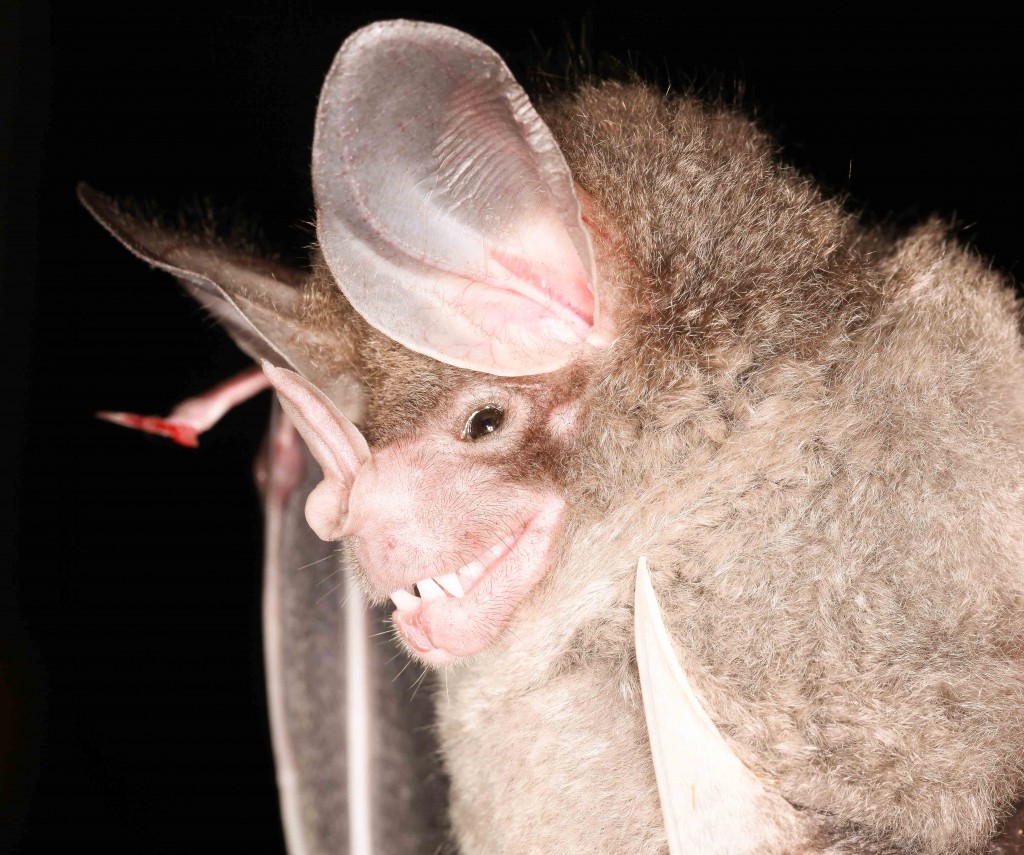
Woolly False Vampire Bat, Chrotopterus auritus, Refugio Bartola
I first visited Nicaragua in February 2013 for a weekend. In February 2014 I returned for a longer weekend after Fiona Reid introduced me to the fabulous Jose Gabriel Martinez, a Nicaraguian biologist who had accompanied her on her 2013 trip and had famously climbed a tree and caught a Water Opossum much to my envy. Jose agreed to take me to Refugio Bartolo for three nights to catch bats and maybe even a Water Opossum. And so a long weekend was planned.
Jose is, it turns out, awesome. And so was his buddy and fellow biologist, Luis Enrique Guitierrez, who came along for the ride and to help set up nets and catch things.
Parque Nacional Volcan Masaya
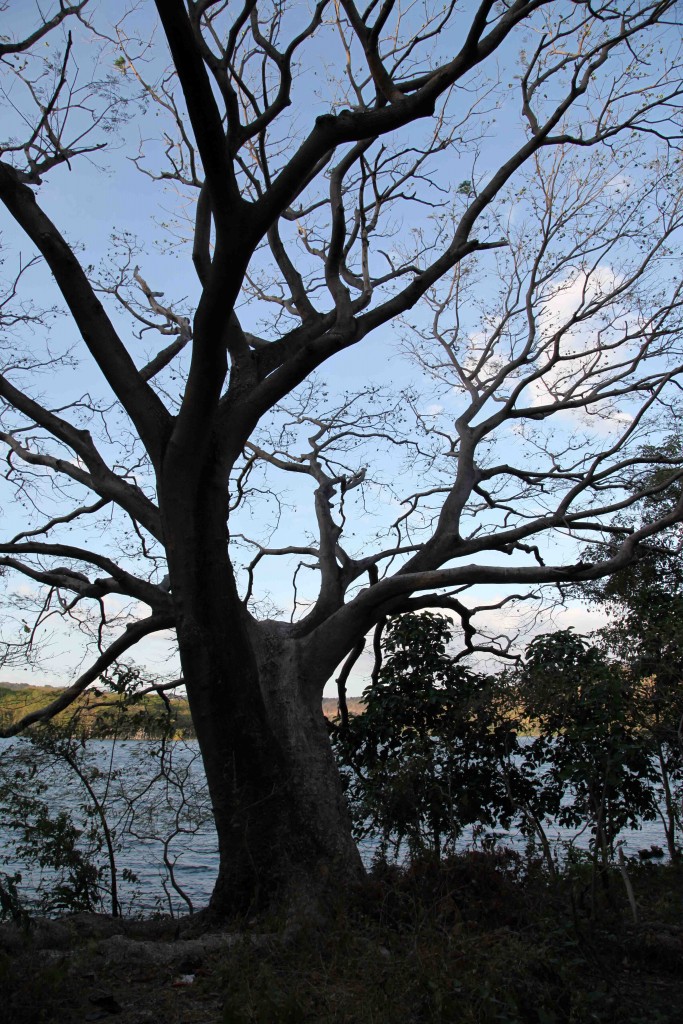
Dry forest, Masaya National Park
The trip from Managua to Refugio Bartola is a 4.5 hour drive followed by a 2.5 hour boat trip. The boats don’t run at night and, as I landed at midday on Saturday, I was going to have to wait until Sunday to travel to the lodge. So Jose arranged for me to return to Volcan Masaya National Park for a night’s netting in the dry forest near the lake. Arnulfo Medina Fitoria came along too, as well as a couple of researchers from the park staff.
We set up some nets near the lake and the mammals came thick and fast. After an initial Jamaican Fruit-eating Bat (Artibeus jamaicensis), we caught my first ever Gray Short-tailed Bat (Carollia subrufa).
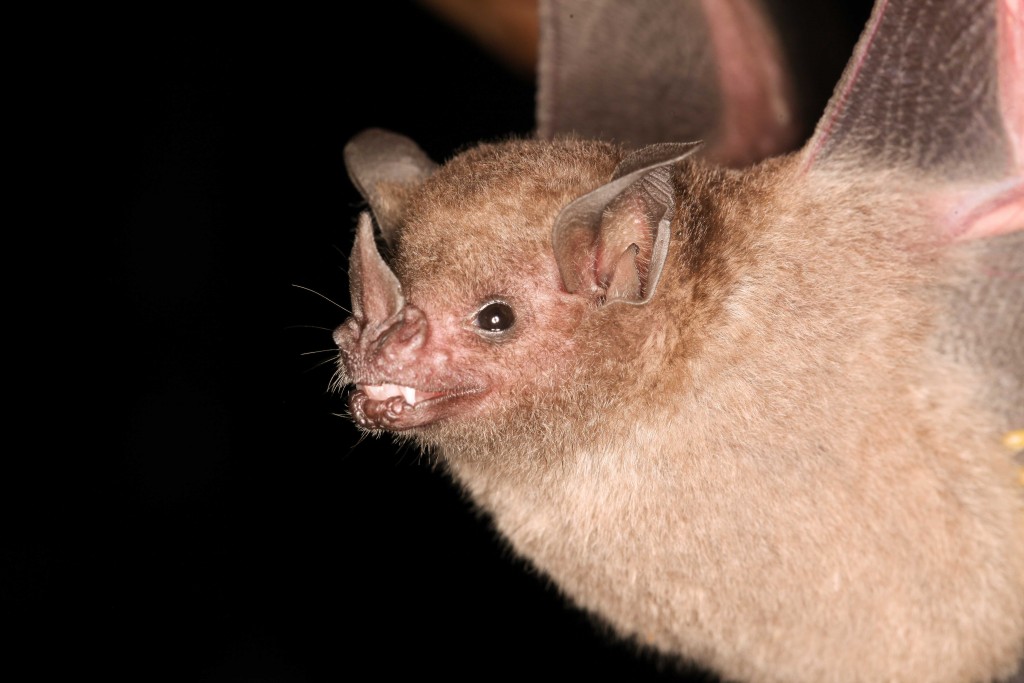
Gray Short-tailed Bat, Carollia subrufa
Soon after that I spotted a spiny mouse bouncing through the leaf litter which Jose grabbed. A Salvin’s Spiny Pocket Mouse (Liomys salvini), apparently very common in the park
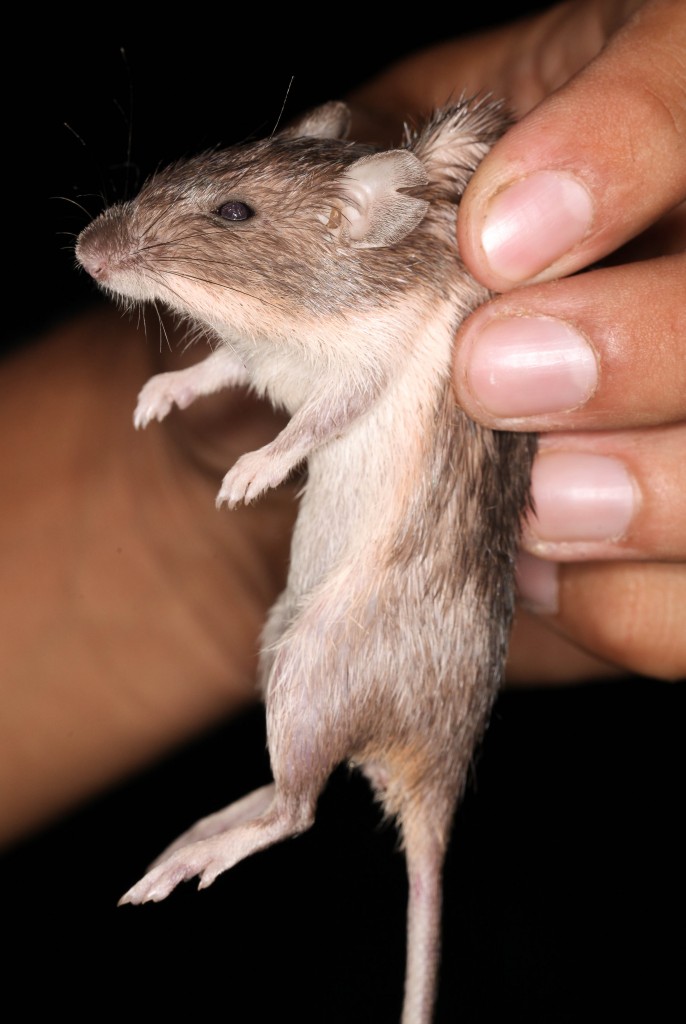
Salvin’s Spiny Pocket Mouse, Liomys salvini
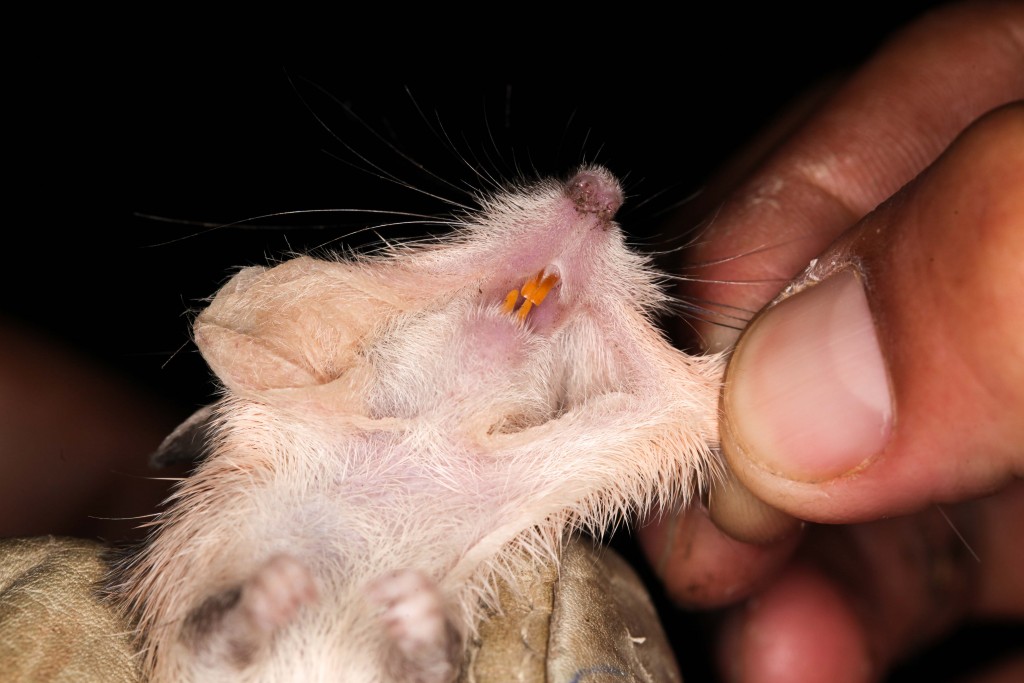
Salvin’s Spiny Pocket Mouse, Liomys salving, cheek pouches
Back at the nets Arnulfo had caught several Brown (Commissarisi’s) Long-tongued Bats (Glossophaga commissarisi), a third lifer for me of the night.
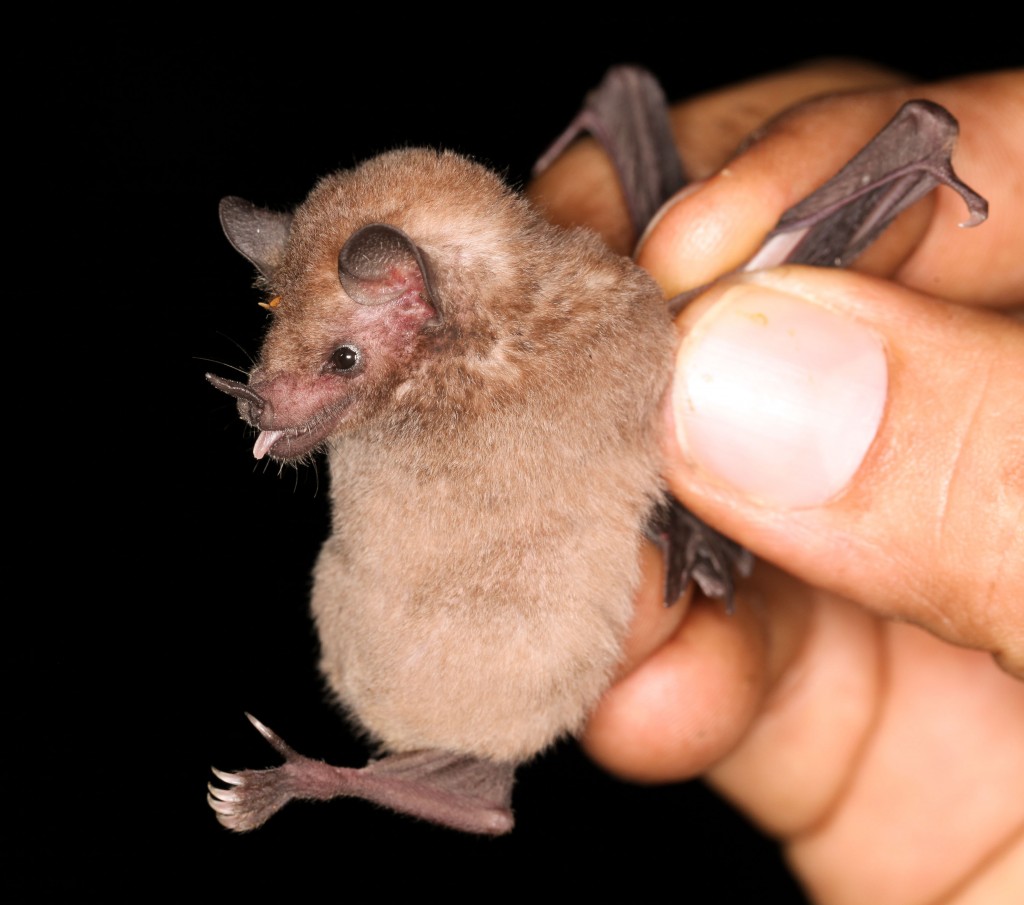
Brown Long-tongued Bat, Glossophaga commissarisi
He then caught a couple of mystery bats that were eventually identified as Gray’s Long-tongued Bats (Glossophaga leachii), lifer number 4.
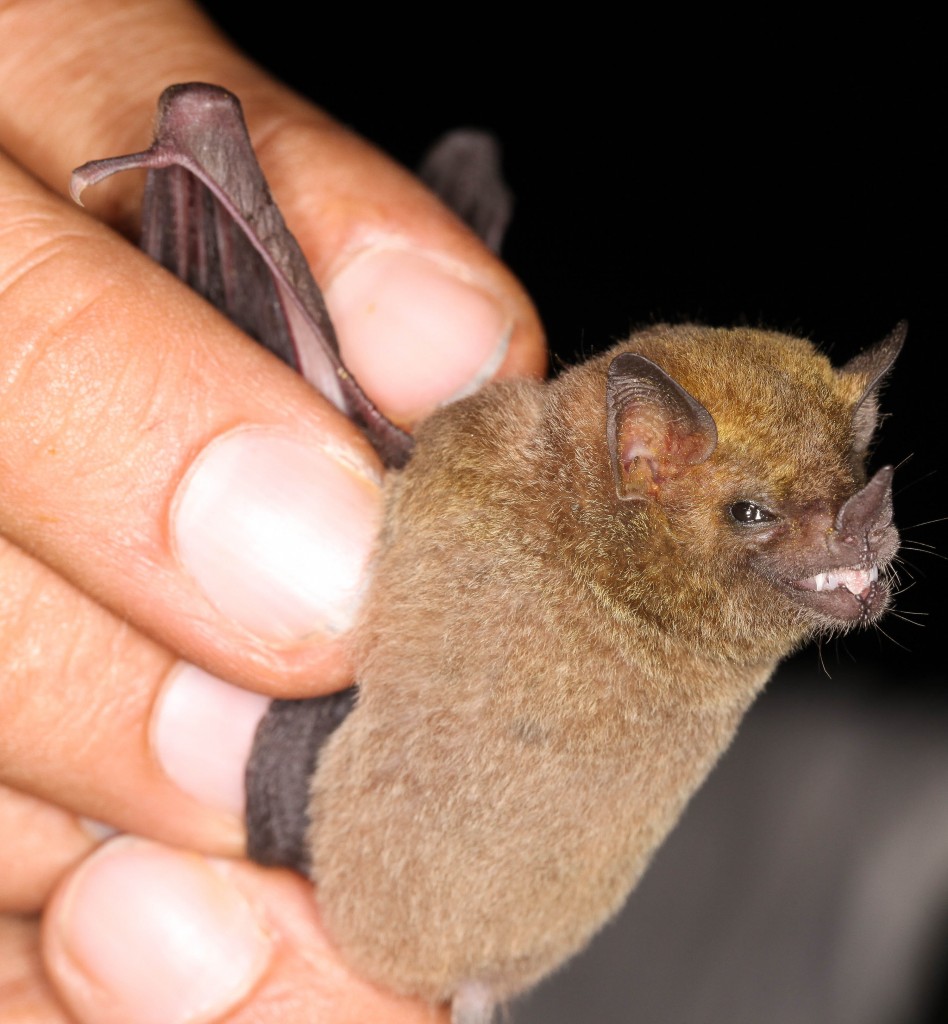
Gray’s Long-tongued Bats, Glossophaga leachii
Jose Manuel had told me that Southern Spotted Skunks were common in Masaya and sure enough he saw one near one of the nets. I watched it briefly while it was under a rock that marked the entrance to a burrow, and saw it several times again during the evening. At one point it went almost directly under the rock I was sitting on (though hard to photograph with a macro lens and a ring flash). This was a species I hadn’t expected to see at all, and a great bonus, especially as I’ve tried and failed several times to see the Eastern and Western flavours in the US.
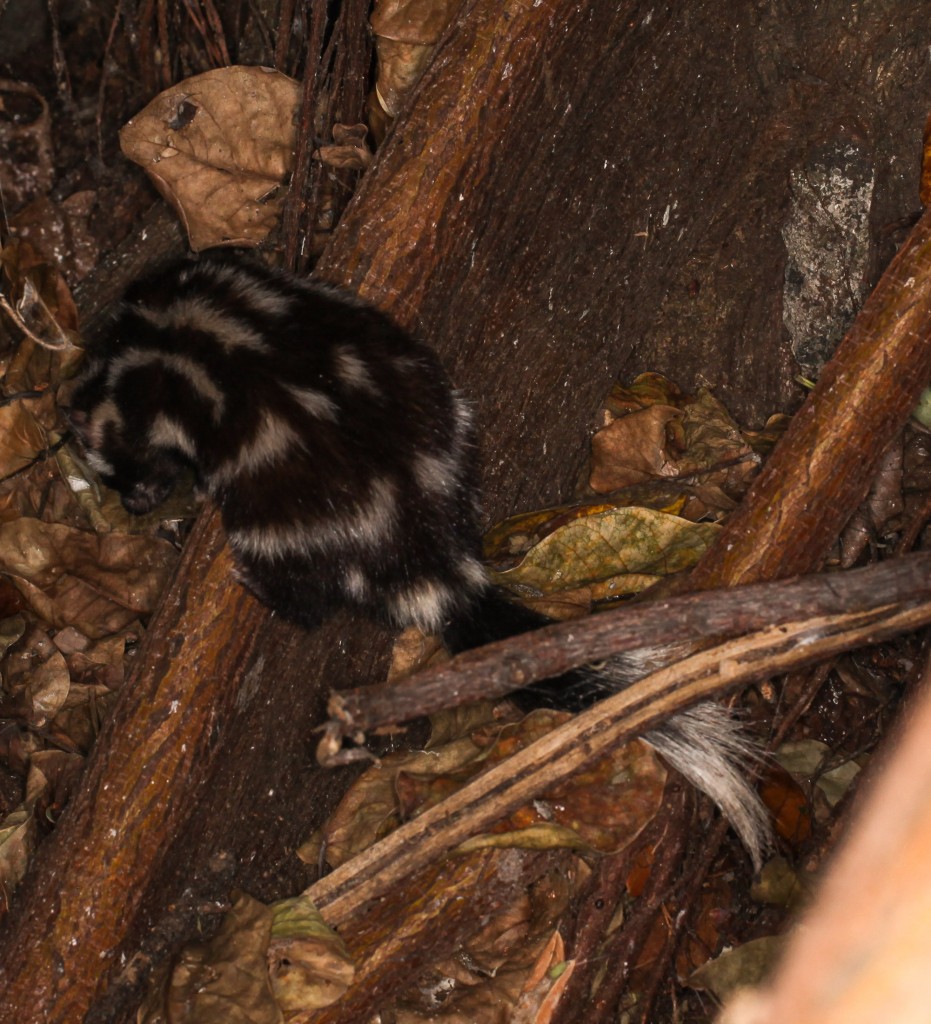
Southern Spotted Skunk, Spilogale angustifrons
We also caught a Thomas’s Fruit-eating Bat (Artibeus watsoni) and Common Long-tongued Bats (Glossophaga soricina), both of which I’d already seen, before closing the nets at around 9 p.m.
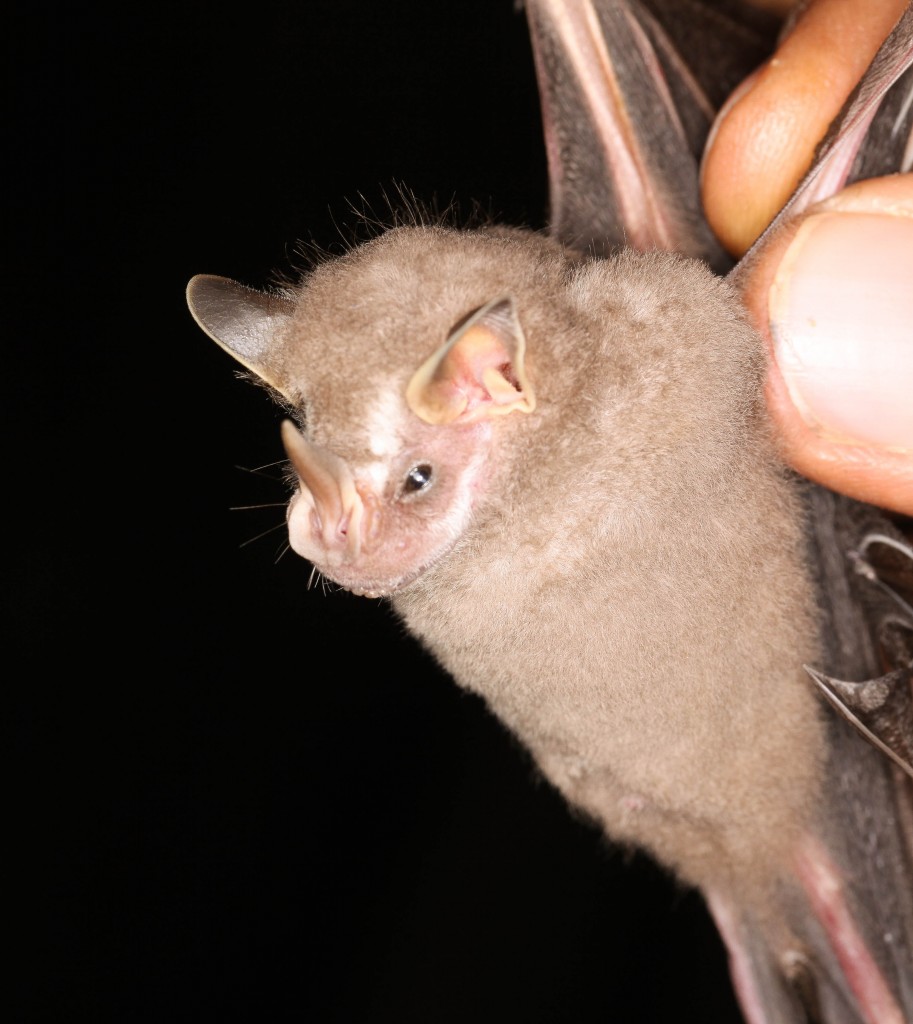
Thomas’s Fruit-eating Bat, Artibeus watsoni
Driving out of the park we had great views of a Mexican Porcupine, only the second time I had seen this species.
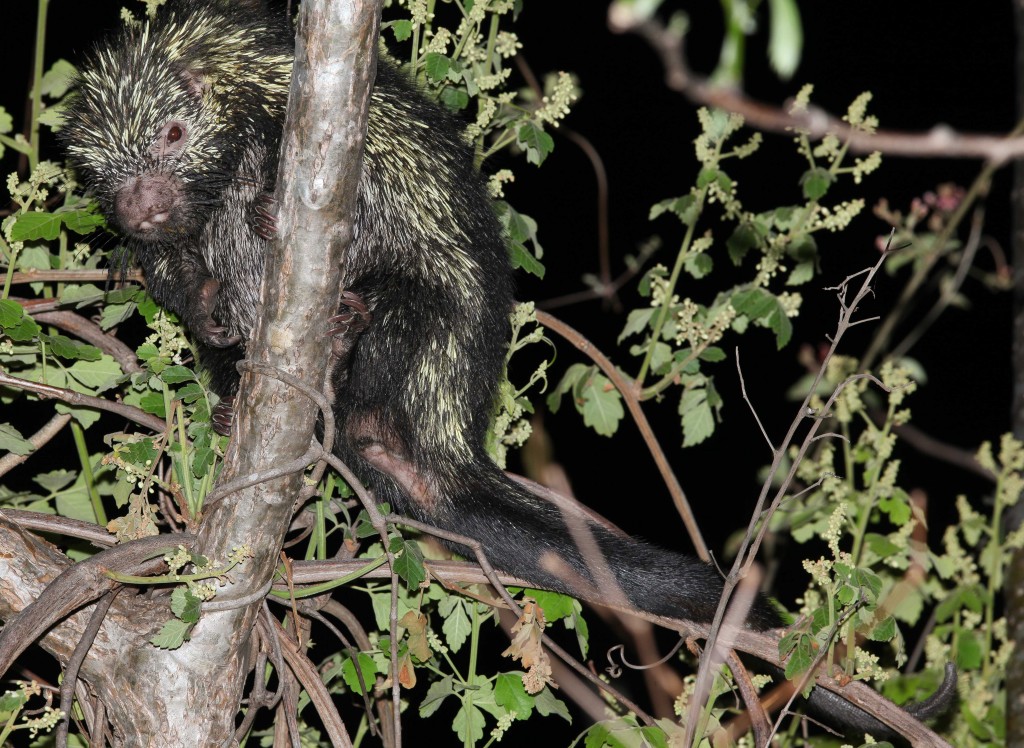
Mexican Porcupine, Sphiggurus mexicanus
The porcupine was closely followed by a Central American Woolly Opossum: it too was in a low tree next to the road.
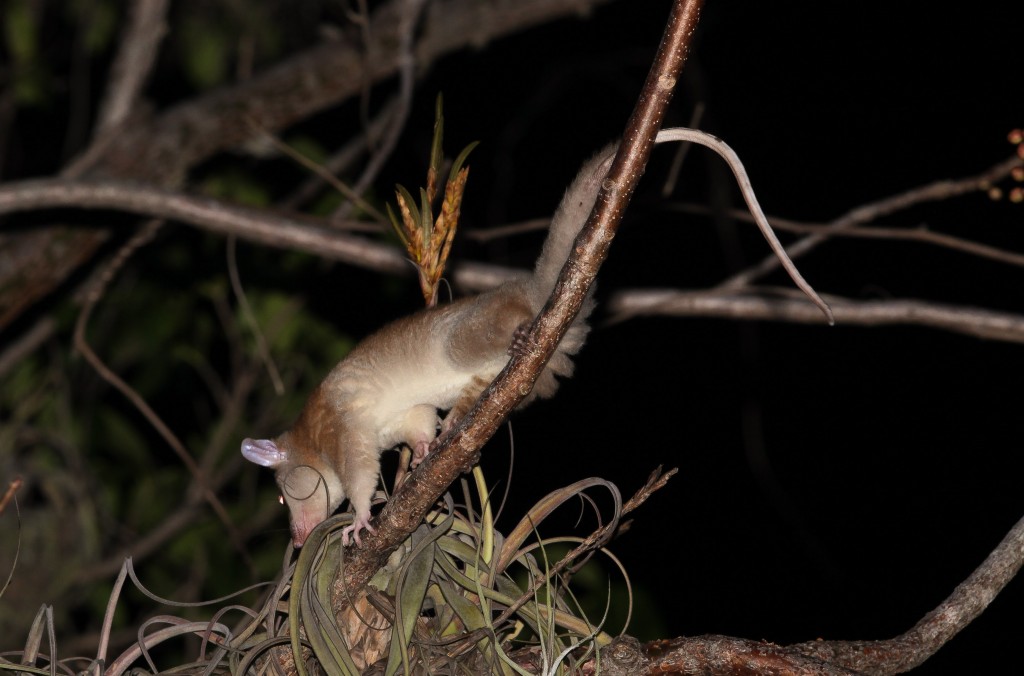
Central American Woolly Opossum, Caluromys derbianus
The evening ended with a look inside a deserted house at the park entrance. It contained many Grey Sac-winged Bats (Balantiopteryx plicata) and one or two Long-tongued Bats (Glossophaga sp.). I couldn’t spot any of the Doglike Bats (Peropteryx sp.) that have been seen there in the past.
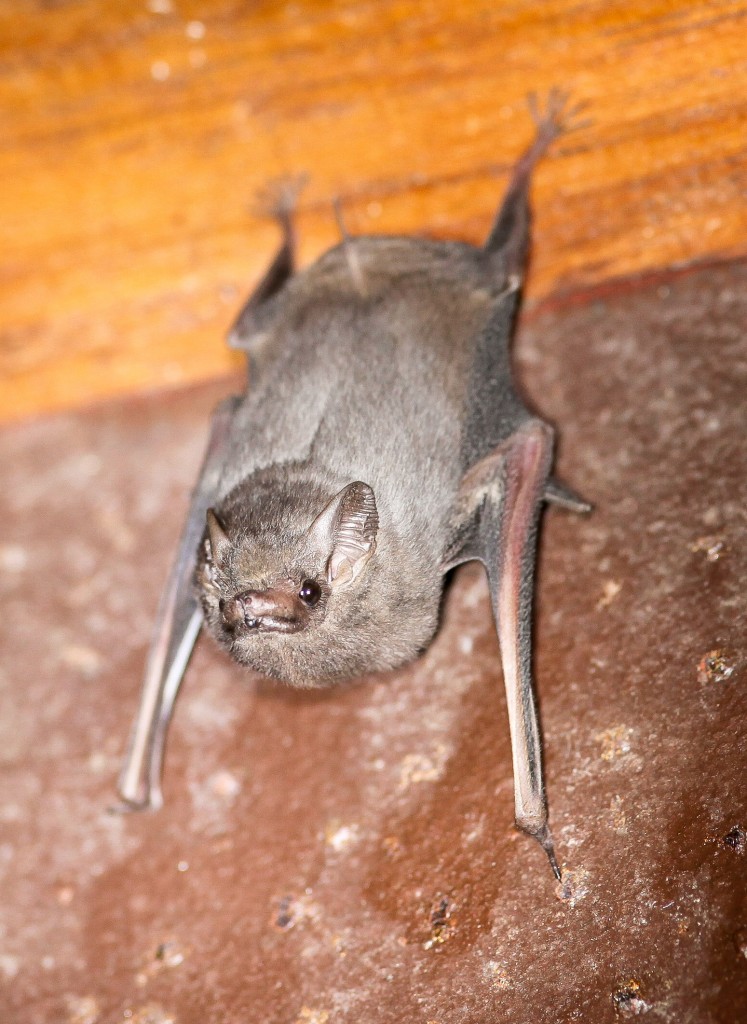
Grey Sac-winged Bat, Balantiopteryx plicata
Jose then drove another two and a half hours to the town of Juigalpa, where we spent the night in a basic hotel that was worth every cent of $16. But not a cent more.
Refugio Bartola
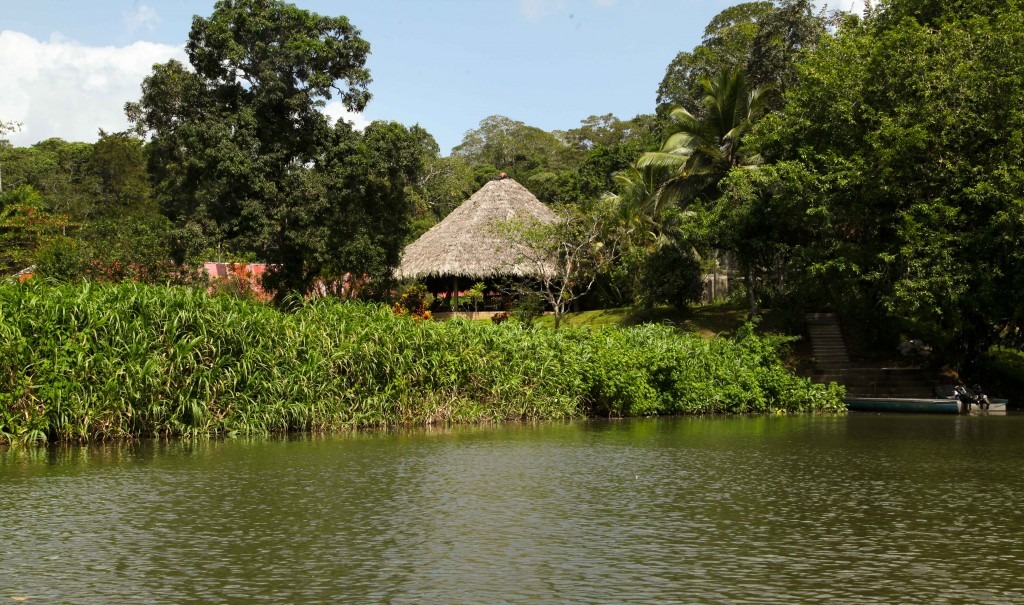
Early the next morning we set of for the port of San Carlos, another 2 hours from Juigalpa, and from there took the 10 a.m. fast boat to the little town of El Castillo, next to the Refugio. The trip took a couple of hours. It was cramped and you shouldn’t count on your luggage staying dry. I didn’t spend any time in El Castillo but there were rumours of a cyber cafe there (there’s no internet at the Refugio). I did have the worst cup of coffee of my life in town. But then it only cost 15 cents.
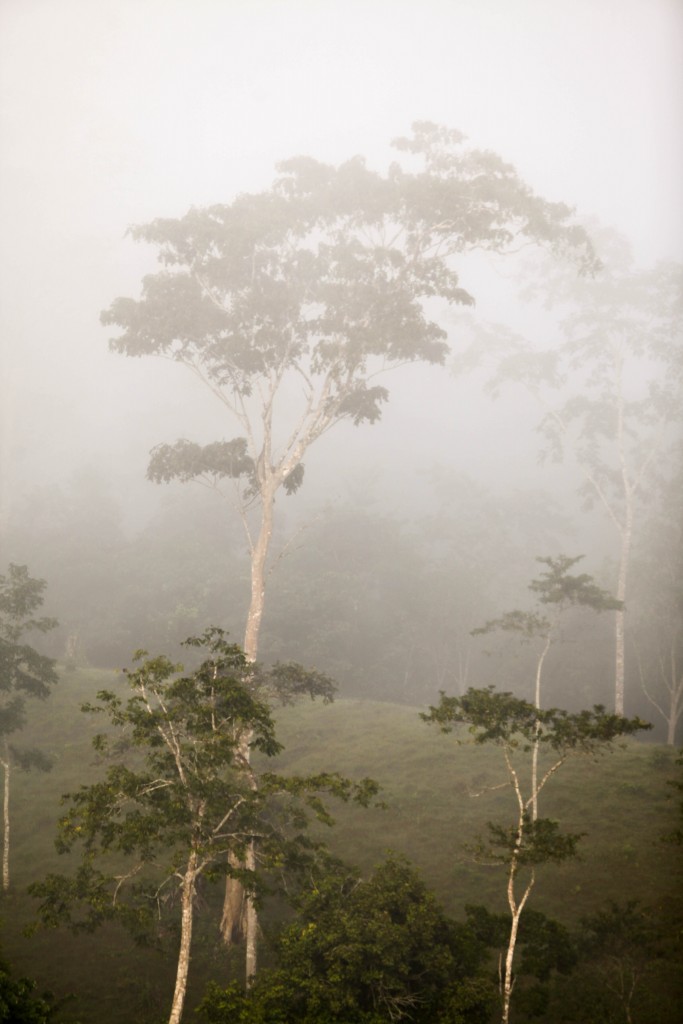
The lodge met us at El Castillo and from there we transferred to a smaller boat and the 20 minute trip to the lovely Refugio Bartolo. A simple place, set on the mouth of the Bartola river where it joins the larger Rio San Juan which is also the border with Costa Rica.
We spent the next three nights catching bats in mistnets and looking for other mammals. The days were quiet, but we spent some time looking for bats around the lodge and staking out the coconut palms in the garden for squirrels: there appear to be at least four species here: Variegated, Red-tailed, Alfaro’s Pygmy and Deppe’s. I was keen to see the latter two, but only got a brief view of a Deppe’s Squirrel, and longer views of several Red-tailed Squirrels.
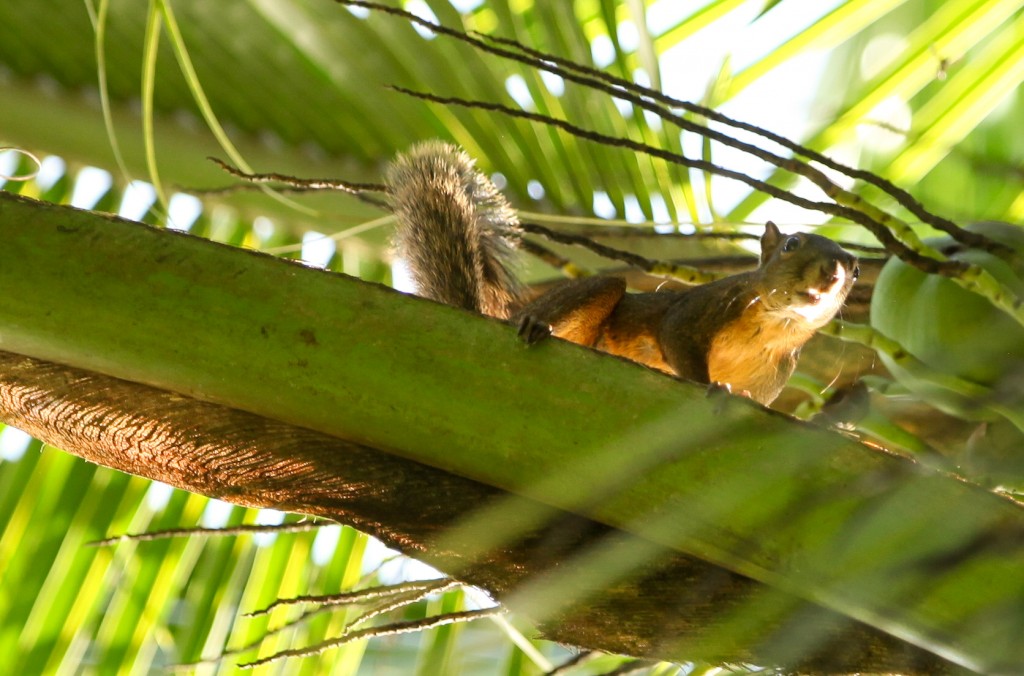
Red-tailed Squirrel, Sciurus granatensis
In the lodge gardens (next to the abandoned house) we spotted a few Smoky Bats(Cyttarops alecto) roosting under high palms where they have been for a few years at least. This is a little known species that is hardly ever caught.
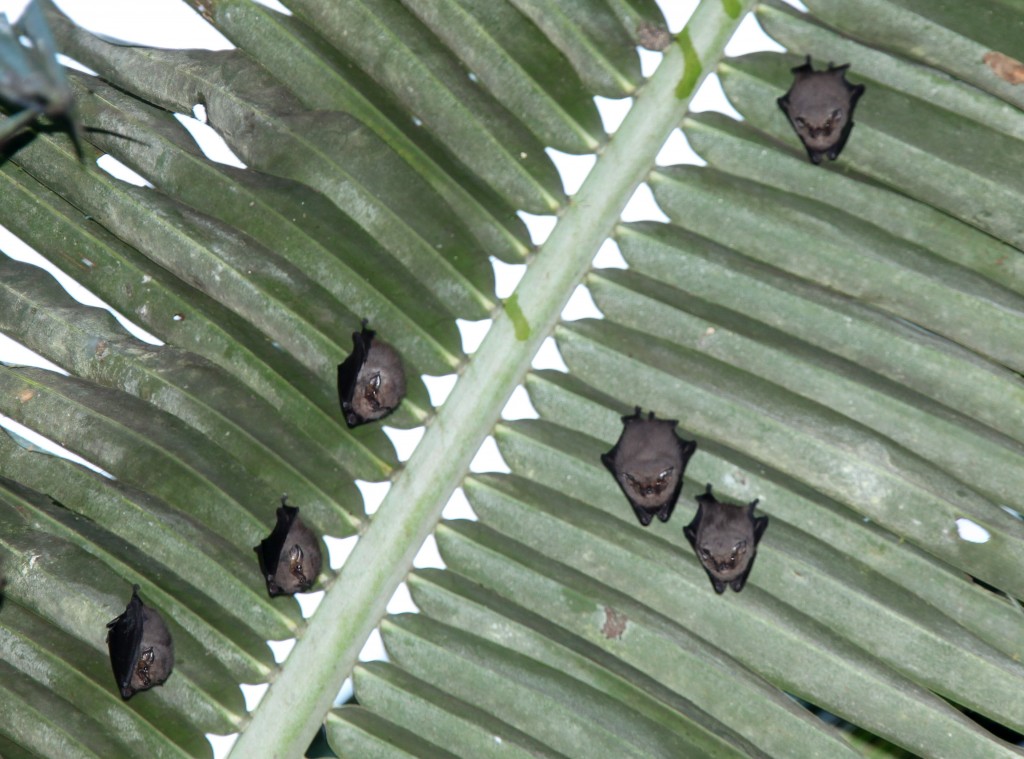
Smoky Bats, Cyttarops alecto
Proboscis Bats (Rhynchonycteris naso) and a few Greater White-lined Bats (Saccopteryx bilineata) used the room of the dining area as a night roost too (the latter species was also inside the abandoned house, next to the Smoky Bats).
In the garden, in a rolled up banana leaf, Luis found four of the brilliant little Spix’s Disc-winged Bats (Thyroptera tricolor), with their sucker feet.
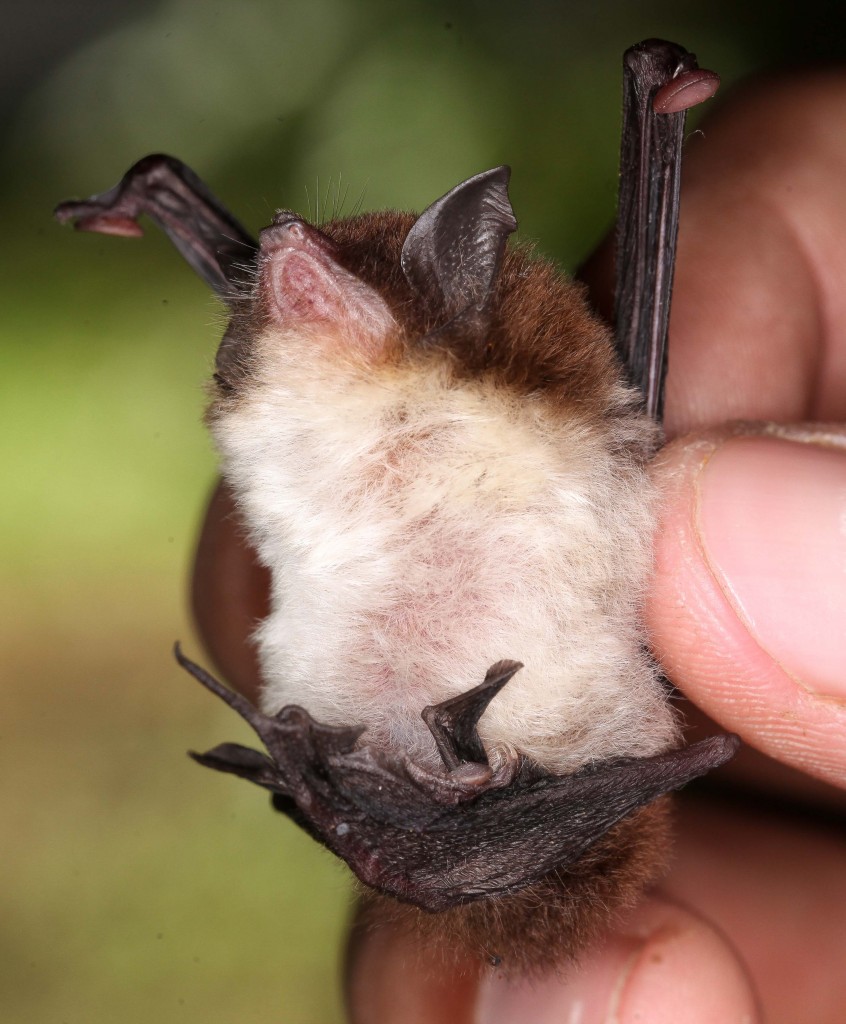
Spix’s Disc-winged Bat, Thyroptera tricolor
The were fascinating to watch crawling around the inside of a glass.
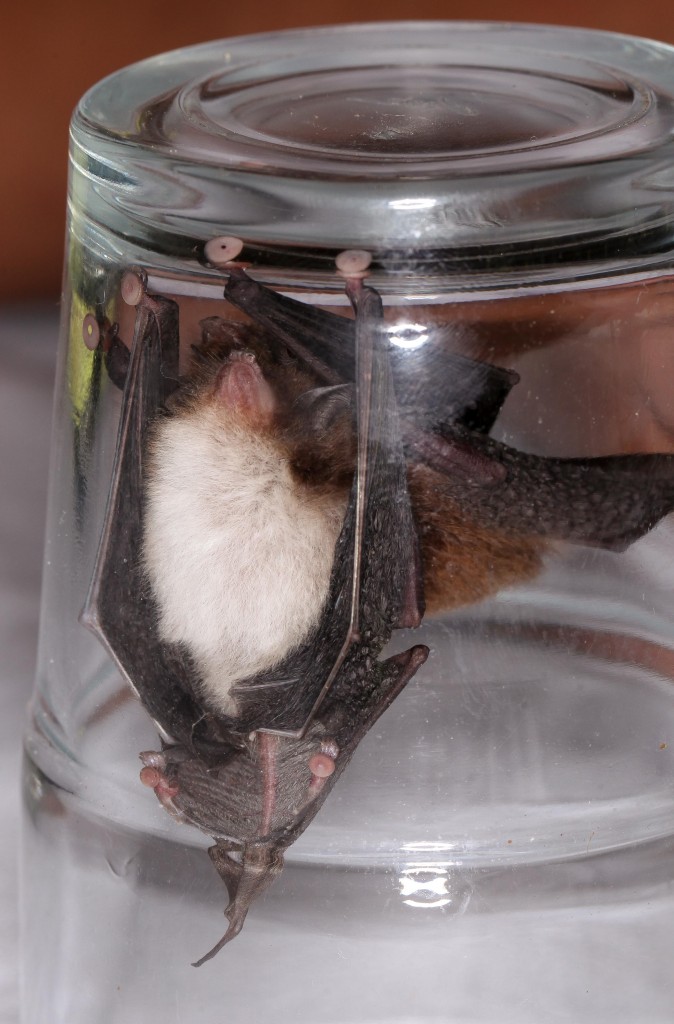
Spix’s Disc-winged Bat, Thyroptera tricolor
One our first night we set nets in the edge of the forest a few hundred metres from the lodge. We caught three species of Short-tailed Bats: Carollia perspicillata, C. castanea and C. sowelli.
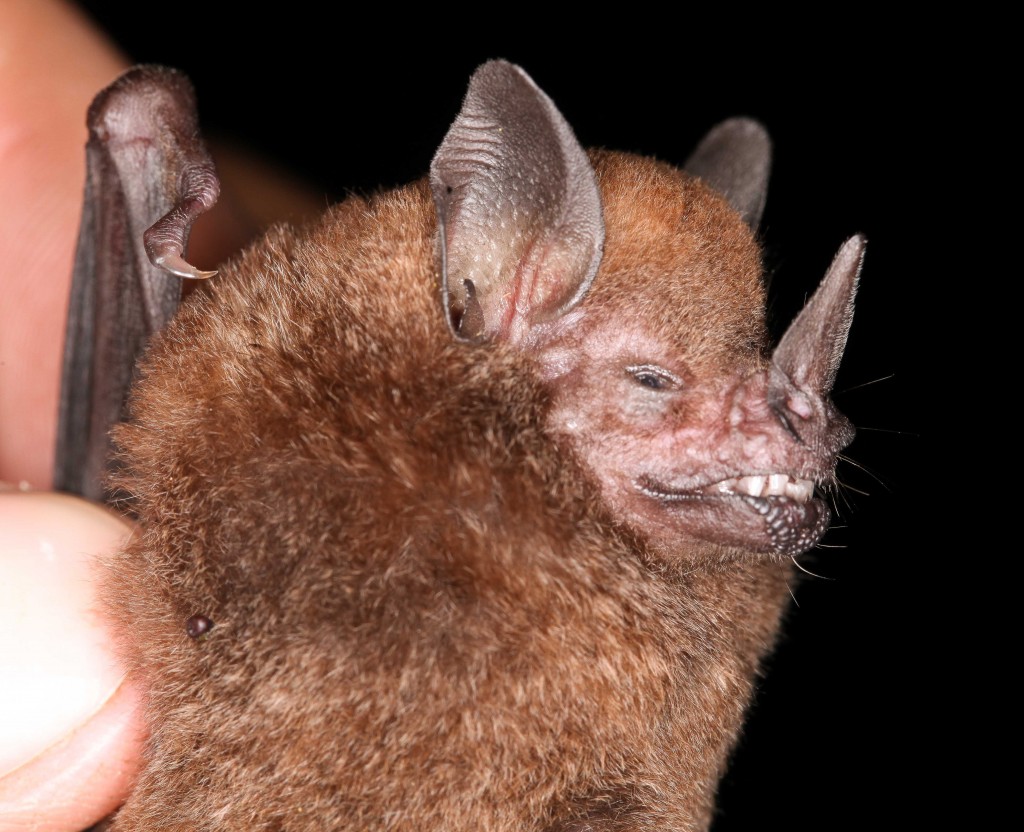
Chestnut Shortailed Bat, Carollia castanea
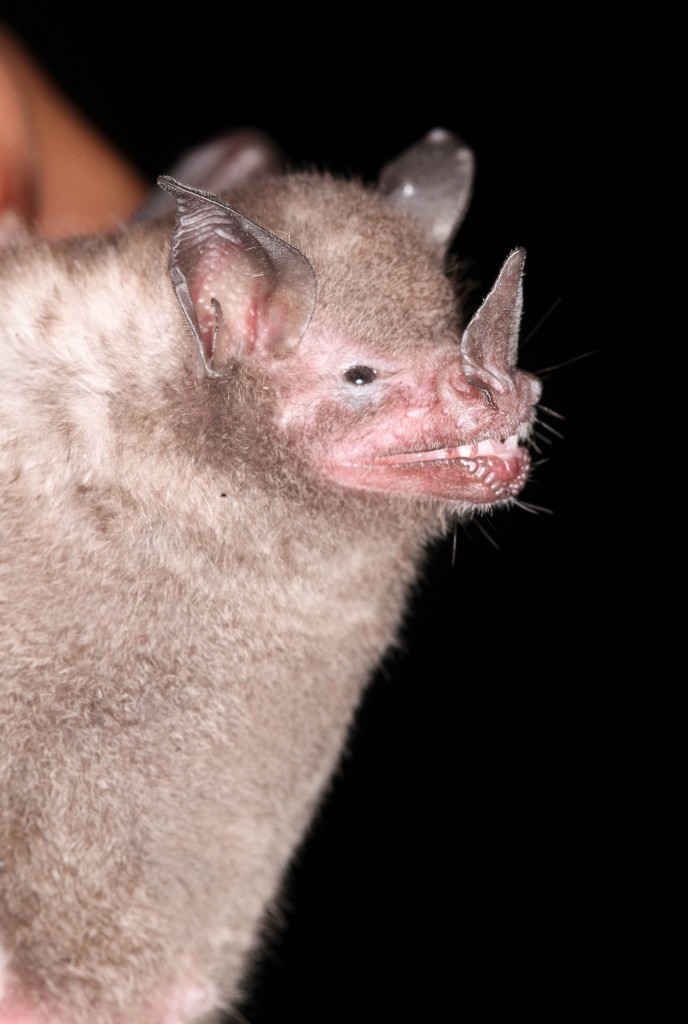
Sowell’s Short-tailed Bat, Carollia sowelli
We also caught a Great Fruit-eating Bat (Artibeus lituratus) and a Common Vampire Bat (Desmodus rotundus).
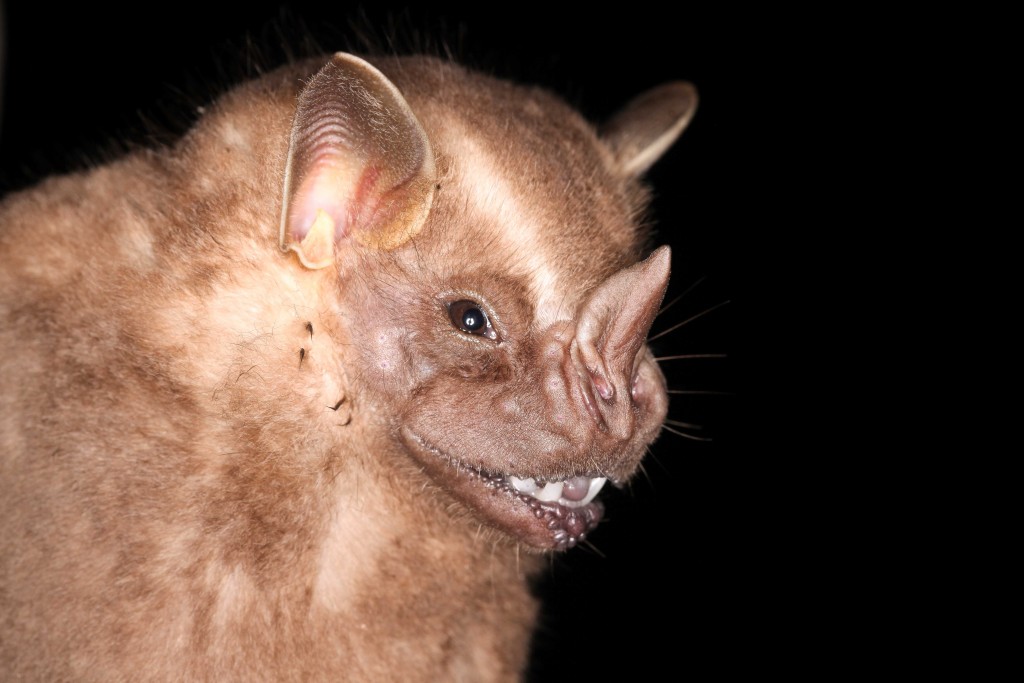
Great Fruit-eating Bat, Artibeus lituratus
None were new for me, though it was the first time I had seen Chestnut Short-tailed Bats (Carollia castanea) and Vampire Bats in the hand.
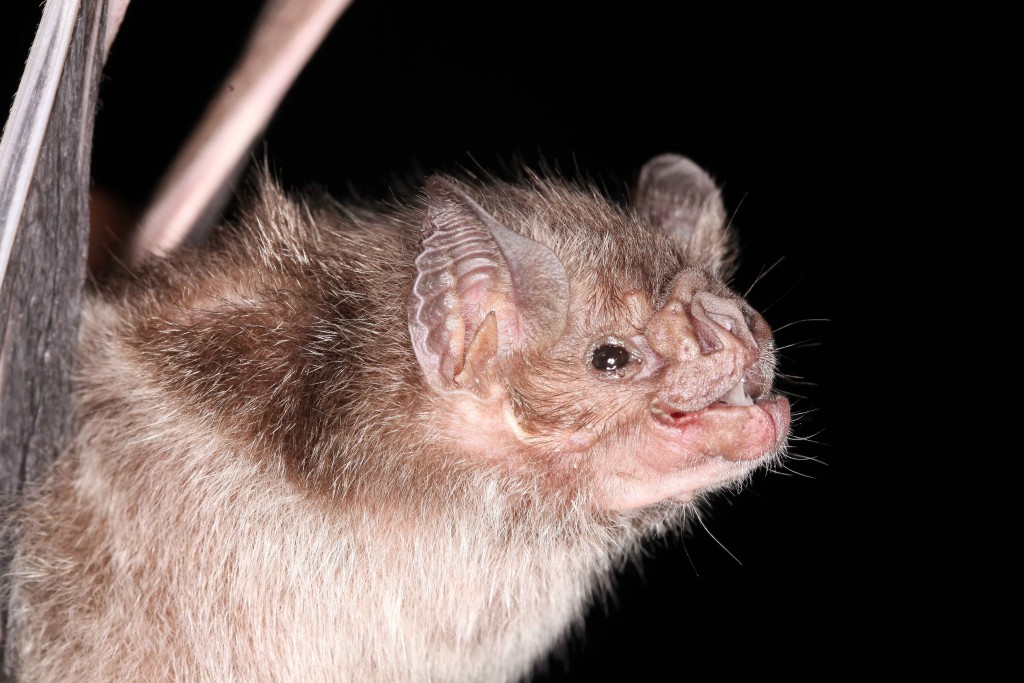
Common Vampire Bat, Desmodus rotundus
On the second night, we left Luis to man the nets while we took a boat from the lodge up-river to look for Water Opossums. Jose and Luis set the traps in a more open patch of forest and caught some nice species. A Hairy Big-eared Bat (Micronycteris hirsuta), which I had not see in the hand before.
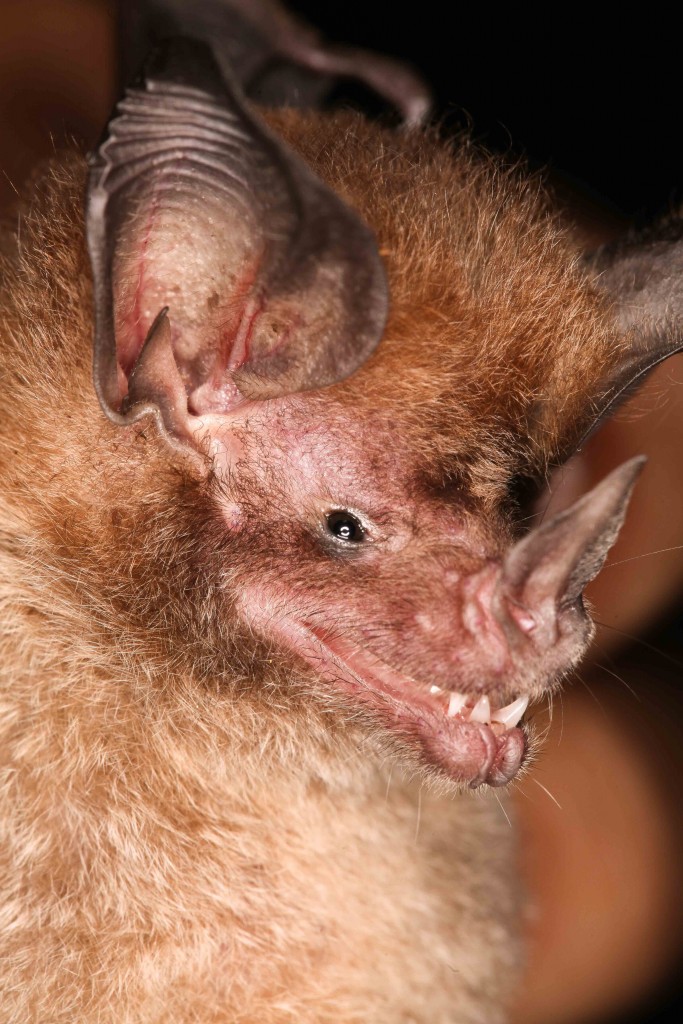
Hairy Big-eared Bat, Micronycteris hirsuta
He also caught some Brown Long-tongued Bats (Glossophaga commissarisi), another Great Fruit-eating Bat (Artibeus lituratus), and a pretty little Pygmy Fruit-eating Bat (Artibeus phaeotis).
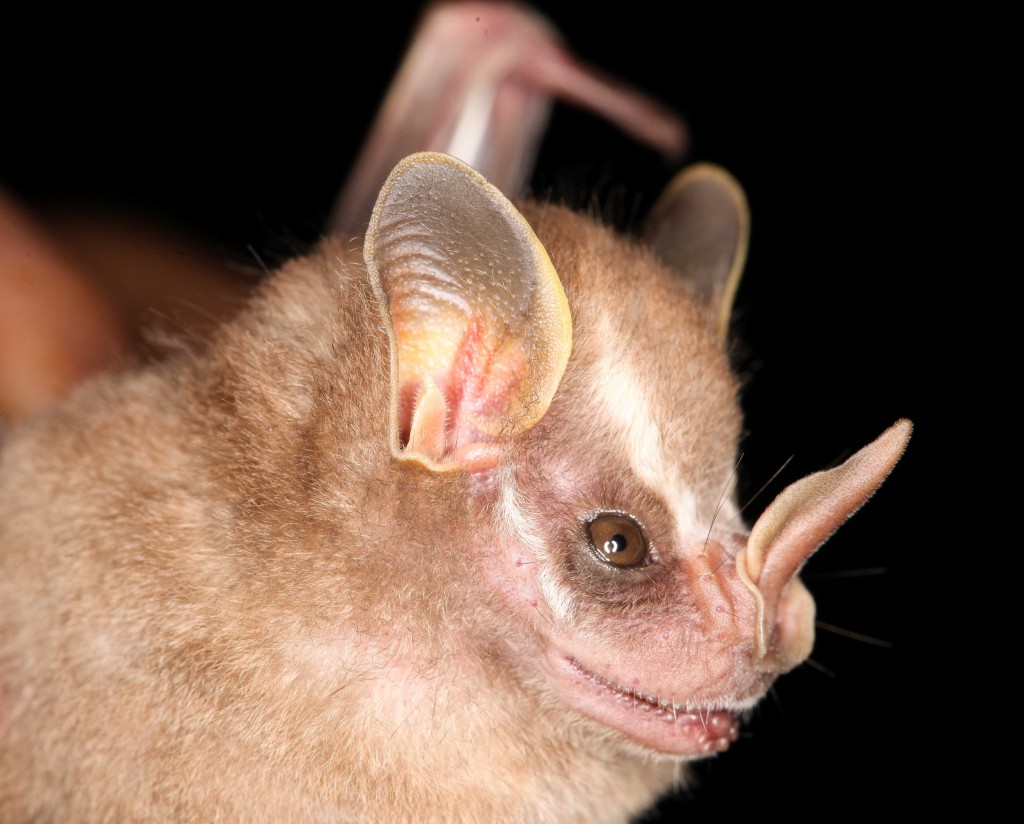
Pygmy Fruit-eating Bat, Artibeus phaeotis
Best of all, a truly spectacular Woolly False Vampire Bat (Chrotopterus auritus), the second largest bat in the neotropics and an uncommon capture.
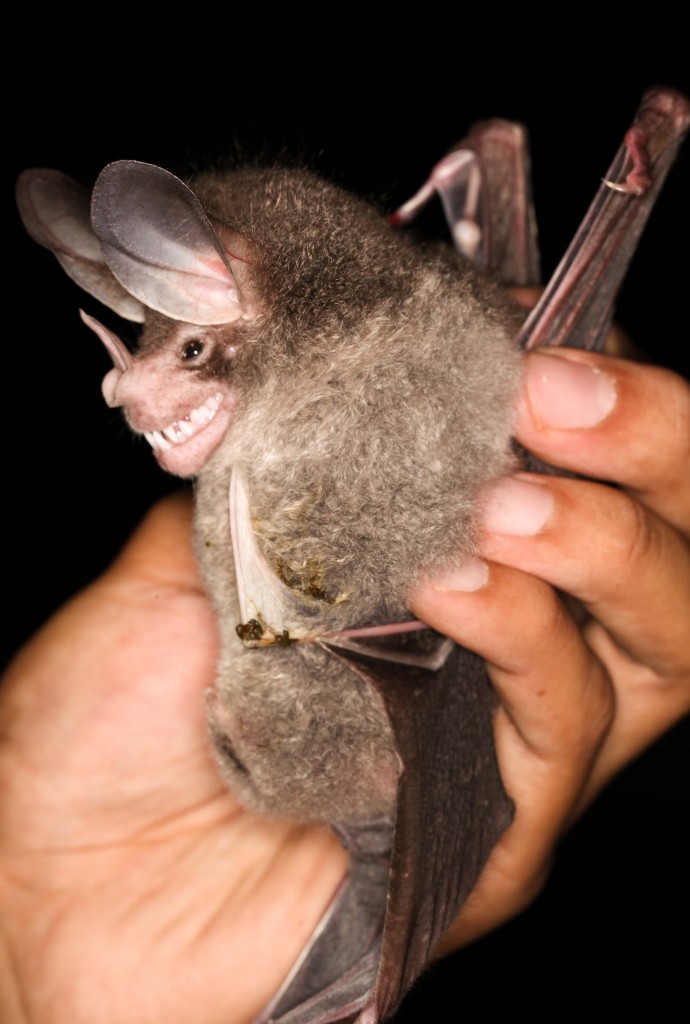
Woolly False Vampire Bat, Chrotopterus auritus
On our third evening the batting was quieter, though we did catch another Woolly False Vampire Bat and a Lesser-white Lined Bat (Saccopteryx leptura).
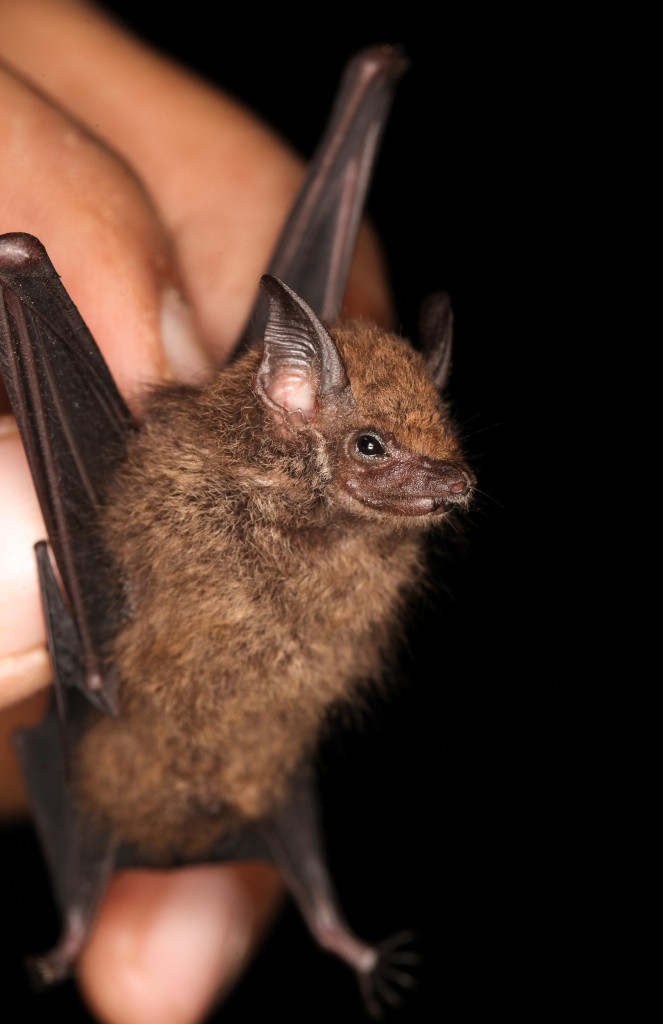
Lesser-white Lined Bat, Saccopteryx leptura
We also caught a Riparian Myotis (Myotis riparius).
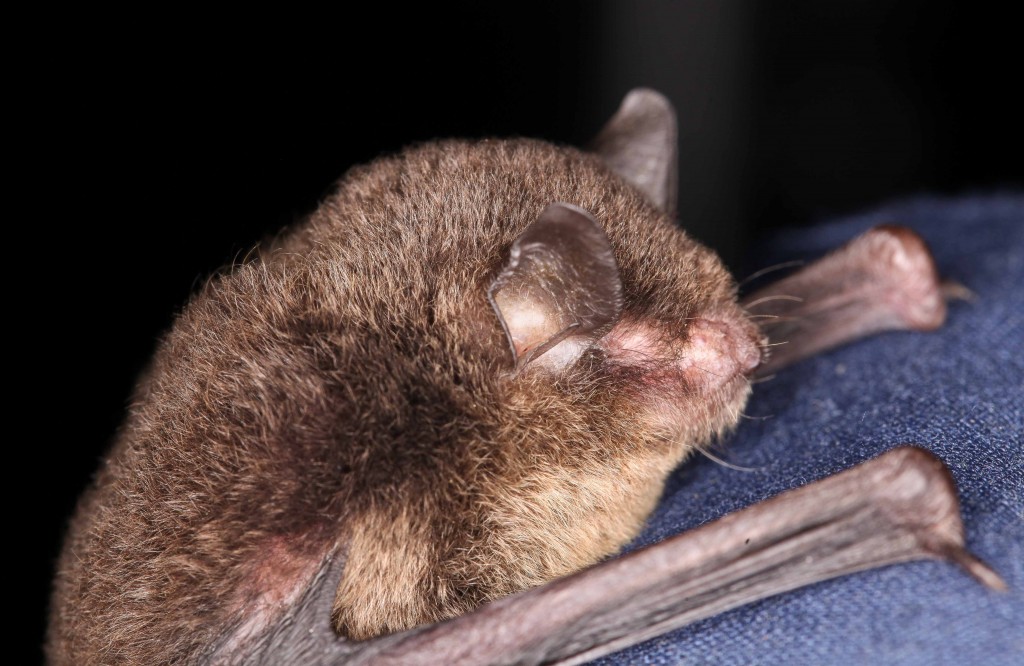
Riparian Myotis, Myotis riparius
Central American Agoutis were common around the lodge in the evening.
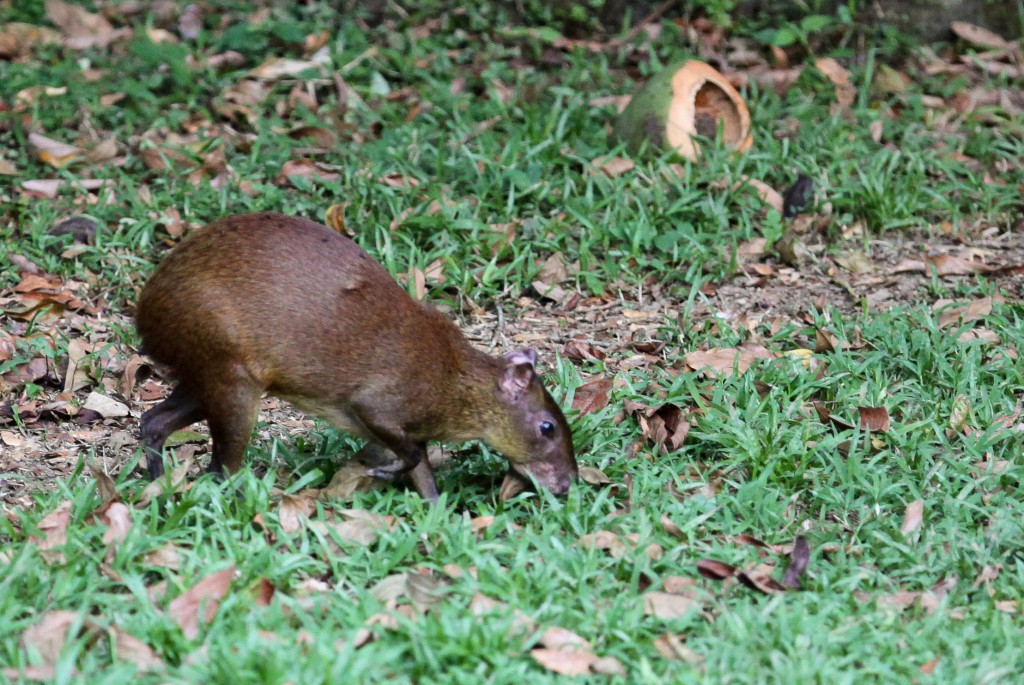
Central American Agouti, Dasyprocta punctata
Central American Spider Monkeys and Mantled Howler Monkeys were always close to the lodge during my stay. Indeed the howlers were much too close when they launched their 5 a.m. alarm calls each morning.
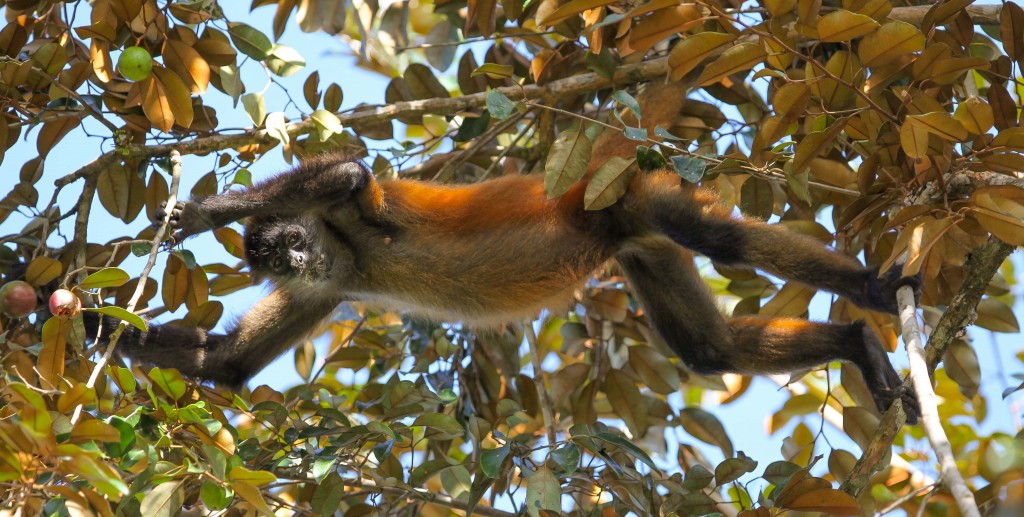
Central American Spider Monkey, Ateles geoffroyi
The initial motivation for this trip had been to try to see the Water Opossum that Jose had caught during Fiona Reid’s tour in 2013. It was a species I dearly wanted to see and though I was sceptical at the prospect of lightning striking twice I had to try. So on the second night Jose and I took a small boat up the Rio Bartola for an hour’s punt to the very place where he’d caught the opossum a year earlier (the river gets too shallow at this point to navigate further by boat). We wandered a couple of hundred metres further upriver and when we got back to the boat I saw some eyeshine swimming through the water. And then a black and white spotted back emerged from the water. A Yapok!
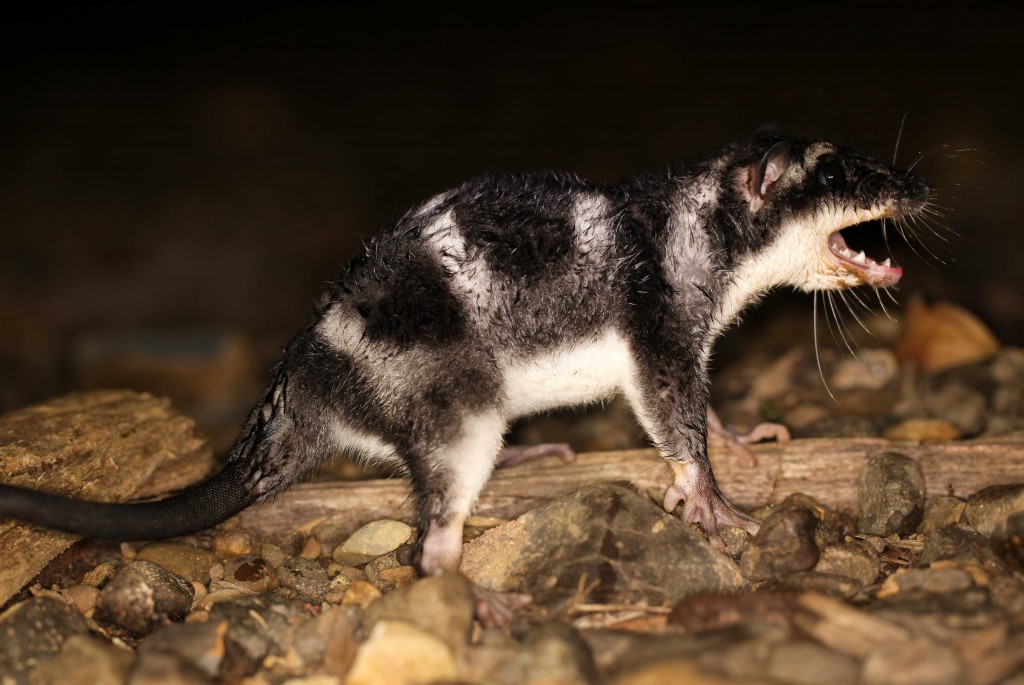
Water Opossum, Chironectes minimus
Jose dashed across the river like a bat out of hell, with his trusty grab-stick in hand. The opossum left the water when it saw him coming and was extremely quick on the land, but then it dived back into the water and – I suppose – played possum. Which gave Jose the chance to grab it. Two for two!
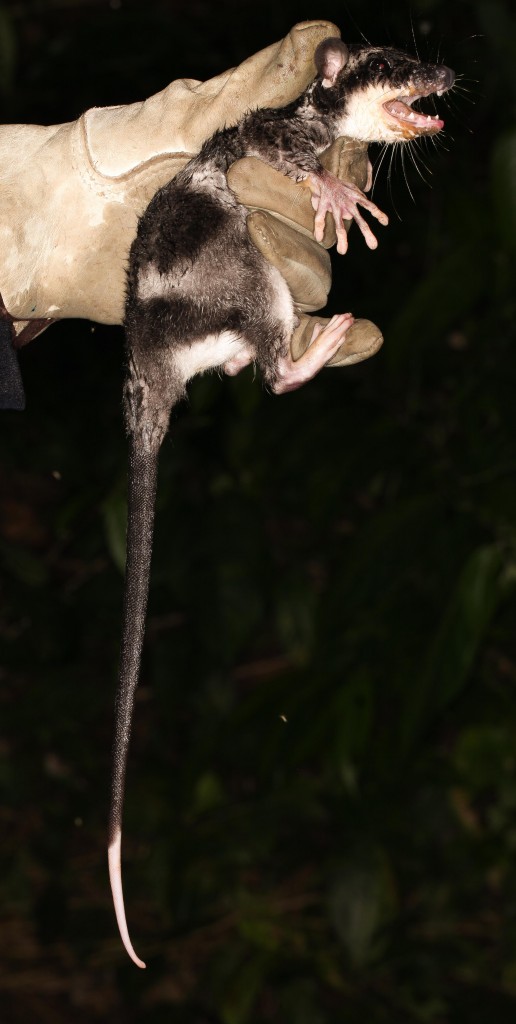
Jose and his Water Opossum, Chironectes minimus
He bought it back across the river for a photo shoot. What a fabulous animal and once that I had long wanted to see ever since, if my memory is correct, some footage of a Water Opossum kicked off the BBC’s Life of Mammals series.
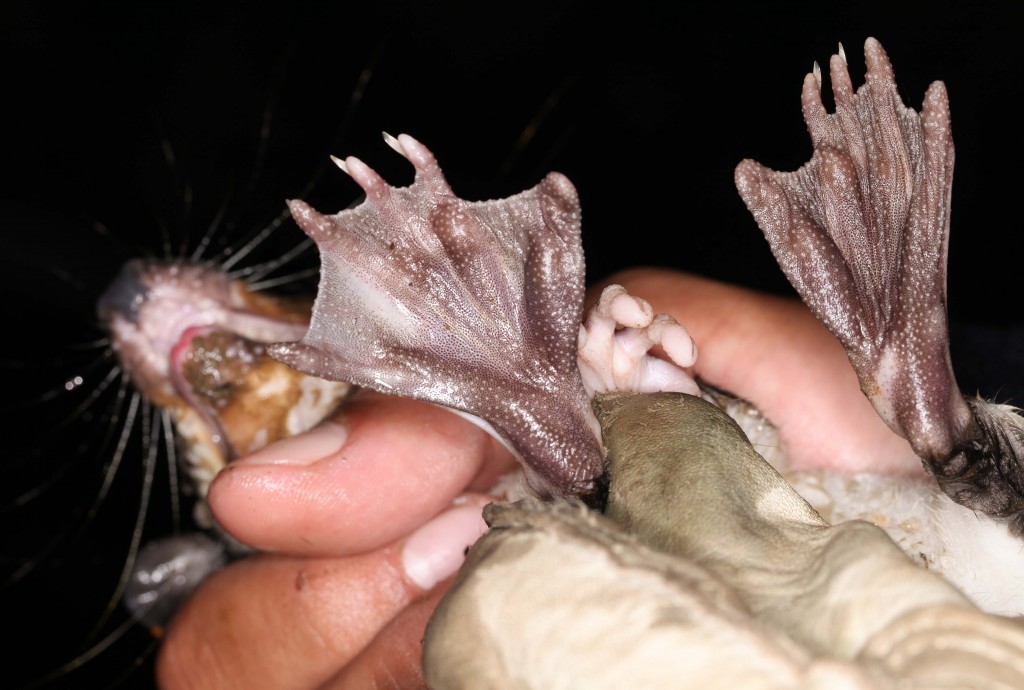
Water Opossum’s feet, Chironectes minimus
The river is great for a night cruise, Water Opossums aside. Shortly after dusk on the way up, I saw a large rat walking along the bank, its white belly and eyeshine quite distinctive and so almost certainly an Armoured Rat (Hoplomys gymnurus), which Fiona Reid had said were quite common around the lodge. We also saw a Kinkajou feeding in a tree, and heard several more, closer to the lodge while we were netting.
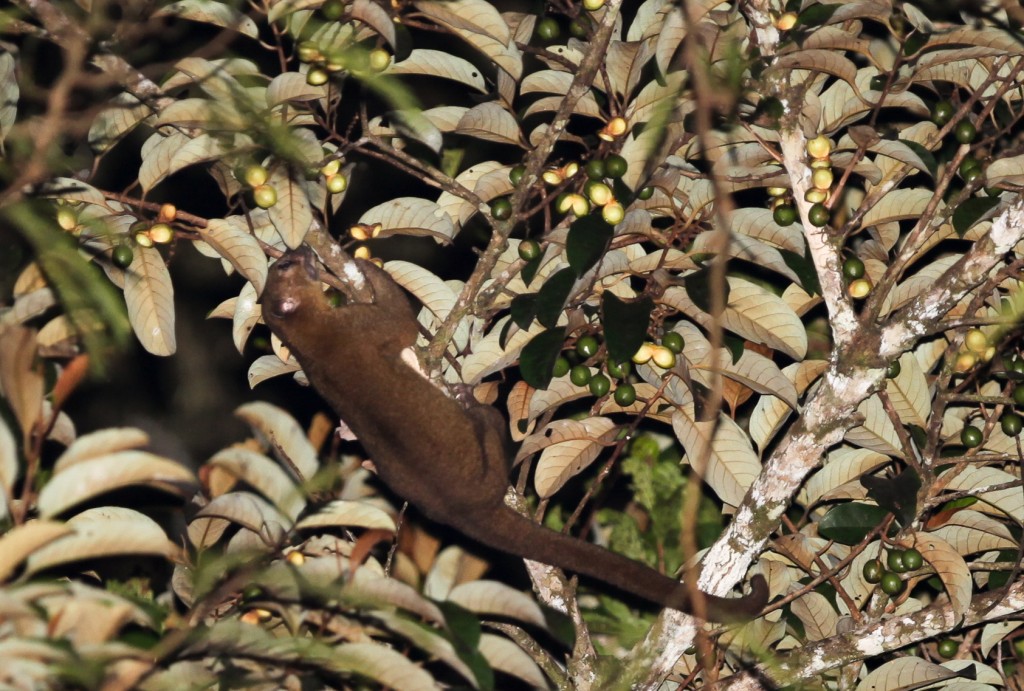
Kinkajou, Potos flavus
On the way back to the lodge we saw a couple of Woolly Opossums, a Mexican Porcupine and heard a human like screaming, near to the bank, which the boatman was sure was a Jaguar.
But the night wasn’t over. Almost back at the lodge Jose grabbed a couple of boas from out of a tree hole, that he identified as a rare Annulated Boa (Corallus annulatus), apparently only the second record for Nicaragua (and the first since 1937).
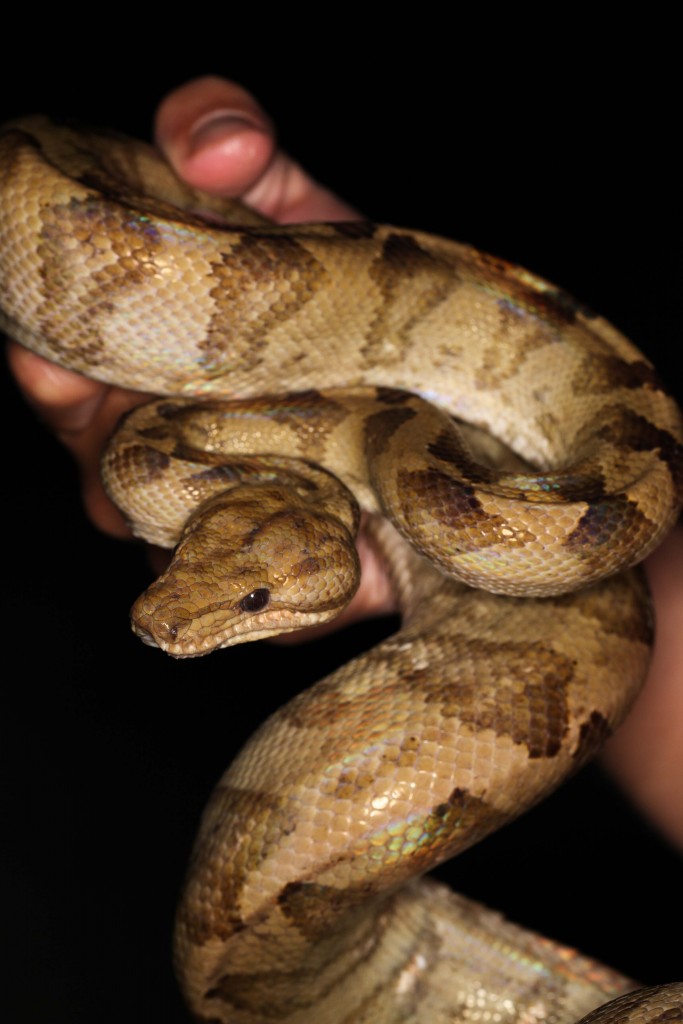
Annulated Boa, Corallus annulatus
An epic night. And an excellent trip, with 34 different species, including 11 lifers for me, well exceeding my expectations. There are still many more bats at the Refugio that Fiona has caught in the past that I’d like to see, including Phylloderma stenops, Mimon cremulatum, Lophostoma brasiliense and Macrophyllum macrophyllum. If it wasn’t for the full moon we might have managed to snag a few of these too.
A very big thanks to Jose Gabriel Martinez for organising the whole thing, and to him and Luis Enrique Guitierrez for doing such great work in catching bats, mice and opossums. Jose is not a tour guide, but is planning to start some scientific tourism trips in the future and so it could be worth contacting him. He also has some great pictures on facebook (see Diversidad Nica) and on flickr – his user name is “svaldard”. A big thanks also to Arnulfo Medina Fitoria for organising all the batting in Masaya on the first night, and also to Fiona Reid for the inspiration and introductions.
Trip List
1 Water Opossum Chironectes minimus
2 Central American Woolly Opossum Caluromys derbianus
3 Red-tailed Squirrel Sciurus granatensis
4 Deppe’s Squirrel Sciurus deppei
5 Mexican Porcupine Sphiggurus mexicanus
6 Salvin’s Spiny Pocket Mouse Liomys salvini
7 Central American Agouti Dasyprocta punctata
8 Armored Rat Hoplomys gymnurus
9 Southern Spotted Skunk Spilogale angustifrons
10 Kinkajou Potos flavus
11Gray Sac-winged Bat Balantiopteryx plicata
12 Proboscis Bat Rhynchonycteris naso
13 Lesser White-lined Bat Saccopteryx leptura
14 Greater White-lined Bat Saccopteryx bilineata
15 Smoky Sheath-tailed Bat Cyttarops alecto
16 Lesser Fishing Bat Noctilio albiventris
17 Hairy Big-eared Bat Micronycteris hirsuta
18 Big-eared Woolly Bat Chrotopterus auritus
19 Spix’s Disc-winged Bat Thyroptera tricolor
20 Brown Long-tongued Bat Glossophaga commissarisi
21 Gray’s Long-tongued Bat Glossophaga leachii
22 Common Long-tongued Bat Glossophaga soricina
23 Chestnut Short-tailed Bat Carollia castanea
24 Seba’s Short-tailed Bat Carollia perspicillata
25 Sowell’s Short-tailed Bat Carollia sowelli
26 Gray Short-tailed Bat Carollia subrufa
27 Jamaican Fruit-eating Bat Artibeus jamaicensis
28 Pygmy Fruit-eating Bat Artibeus phaeotis
29 Thomas’ Fruit-eating Bat Artibeus watsoni
30 Greater Fruit-eating Bat Artibeus literatus
31 Common Vampire Bat Desmodus rotundus
32 Riparian Myotis Myotis riparius
33 Central American Spider Monkey Ateles geoffroyi
34 Mantled Howler Monkey Alouatta palliata
and Jaguar (Panthera onca) heard
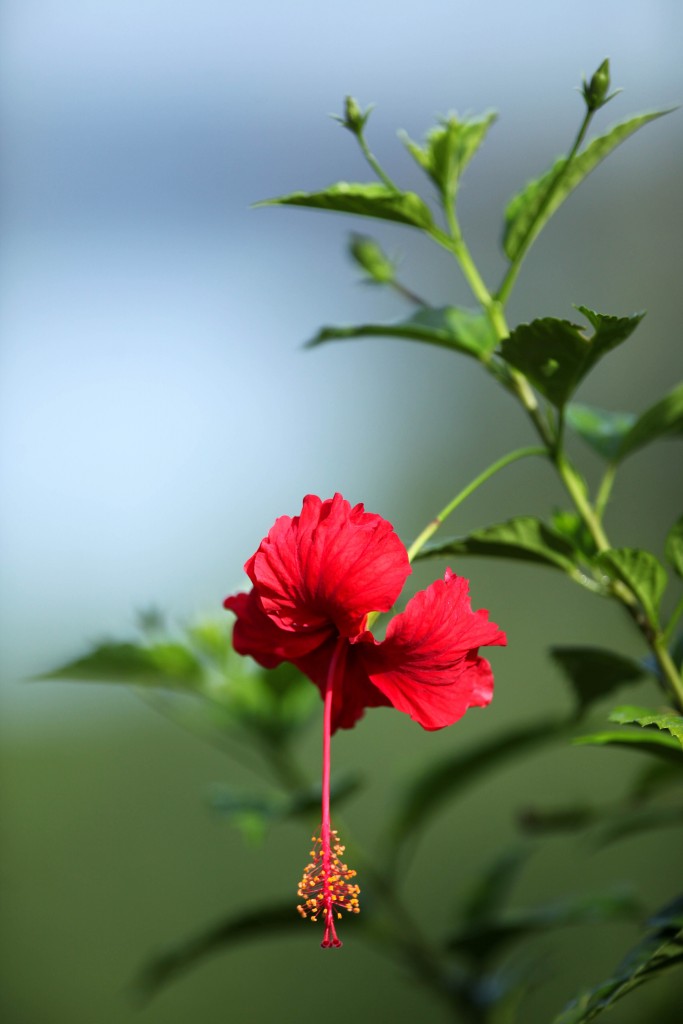


Leave a Reply
You must be logged in to post a comment.